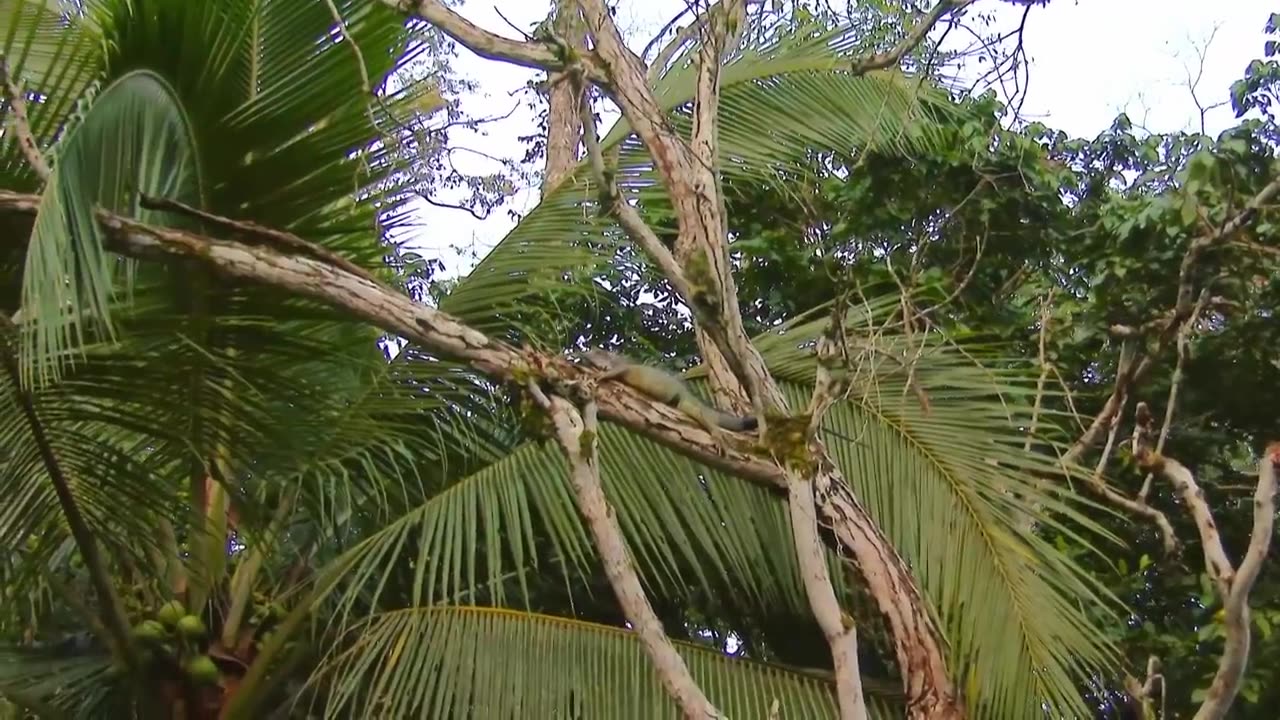Premium Only Content

Wildlife Instincts Survival Techniques - Iguana vs. Basilisk
When comparing the wildlife instincts and survival techniques of iguanas and basilisks, two reptiles found in the tropical regions of the Americas, you can observe some interesting differences and adaptations:
Iguana:
Herbivorous Diet: Iguanas are primarily herbivores, feeding on leaves, fruits, and flowers. Their diet helps them conserve energy and avoid the need for high-risk predation.
Territorial Behaviour: Many iguana species are territorial and defend their feeding and basking areas. They use displays and head-bobbing movements to communicate and establish dominance.
Tail Autotomy: Iguanas have the ability to detach their tails when threatened by predators. The detached tail wriggles, distracting the predator and allowing the iguana to escape. The tail later regrows.
Basking: Iguanas are ectothermic, which means they rely on external sources of heat to regulate their body temperature. They often bask in the sun to warm up and become more active.
Basilisk (Jesus Christ Lizard):
Insectivorous Diet: Basilisks primarily feed on insects and other small invertebrates. Their diet provides them with the necessary energy for their active lifestyle.
Arboreal Lifestyle: Basilisks are highly arboreal (tree-dwelling) and are often found near bodies of water. When threatened, they have the remarkable ability to run on the surface of water for short distances, earning them the nickname "Jesus Christ Lizard."
Cryptic Coloration: Basilisks often have cryptic coloration, which helps them blend into their surroundings and avoid detection by predators.
Diurnal Behaviour: Basilisks are diurnal, meaning they are active during the daytime. This behaviour allows them to take advantage of daylight to forage for food and thermoregulate.
Parental Care: Female basilisks lay eggs, and both males and females exhibit parental care. They may guard their nests and provide some protection for their offspring.
Agility and Speed: Basilisks are known for their agility and speed, which they use to escape from predators. Their ability to run on water is a remarkable adaptation to evade terrestrial threats.
While iguanas and basilisks share some common reptilian traits, such as basking to regulate body temperature, they have evolved different survival strategies based on their diet, habitat, and natural predators. Iguanas tend to rely on territorial behaviour and tail autotomy, while basilisks have developed exceptional agility and the ability to run on water to escape from danger, making them fascinating examples of adaptation in the world of reptiles.
-
 2:11:05
2:11:05
Side Scrollers Podcast
19 hours agoDISASTROUS Cracker Barrel Rebrand + Destiny PDF Allegations + More | Side Scrollers Live
64.6K26 -
 18:57
18:57
Nikko Ortiz
18 hours agoTexas Stand Your Ground Law
14.6K5 -
 18:55
18:55
GritsGG
12 hours agoFastest Killing Warzone SMG!
7.7K -
 LIVE
LIVE
Lofi Girl
2 years agoSynthwave Radio 🌌 - beats to chill/game to
346 watching -
 12:48
12:48
The Pascal Show
9 hours ago $0.31 earnedEX FILES RESTRAINING ORDER! Jake Haro's EX Files Amid Search For Missing Emmanuel Haro
7.93K -
 16:22
16:22
Michael Button
7 days ago $2.14 earnedThe Timeline of Civilization is Completely Wrong
20.6K3 -
 10:02
10:02
Liberty Hangout
14 days agoPaid Protestors Silence Reasonable Democrat
47K67 -
 2:17:55
2:17:55
FreshandFit
7 hours agoMr Organik Vs Garry The Numbers Guy “N Word” Debate!
107K17 -
 2:05:11
2:05:11
Inverted World Live
10 hours agoCyborg Jellyfish, Cockroach Spies, and the Humanoid Holocaust w/ Joe Allen | Ep. 96
105K15 -
 3:30:50
3:30:50
Laura Loomer
10 hours agoEP139: Loomer Shuts Down Gazan Visas
44.8K85